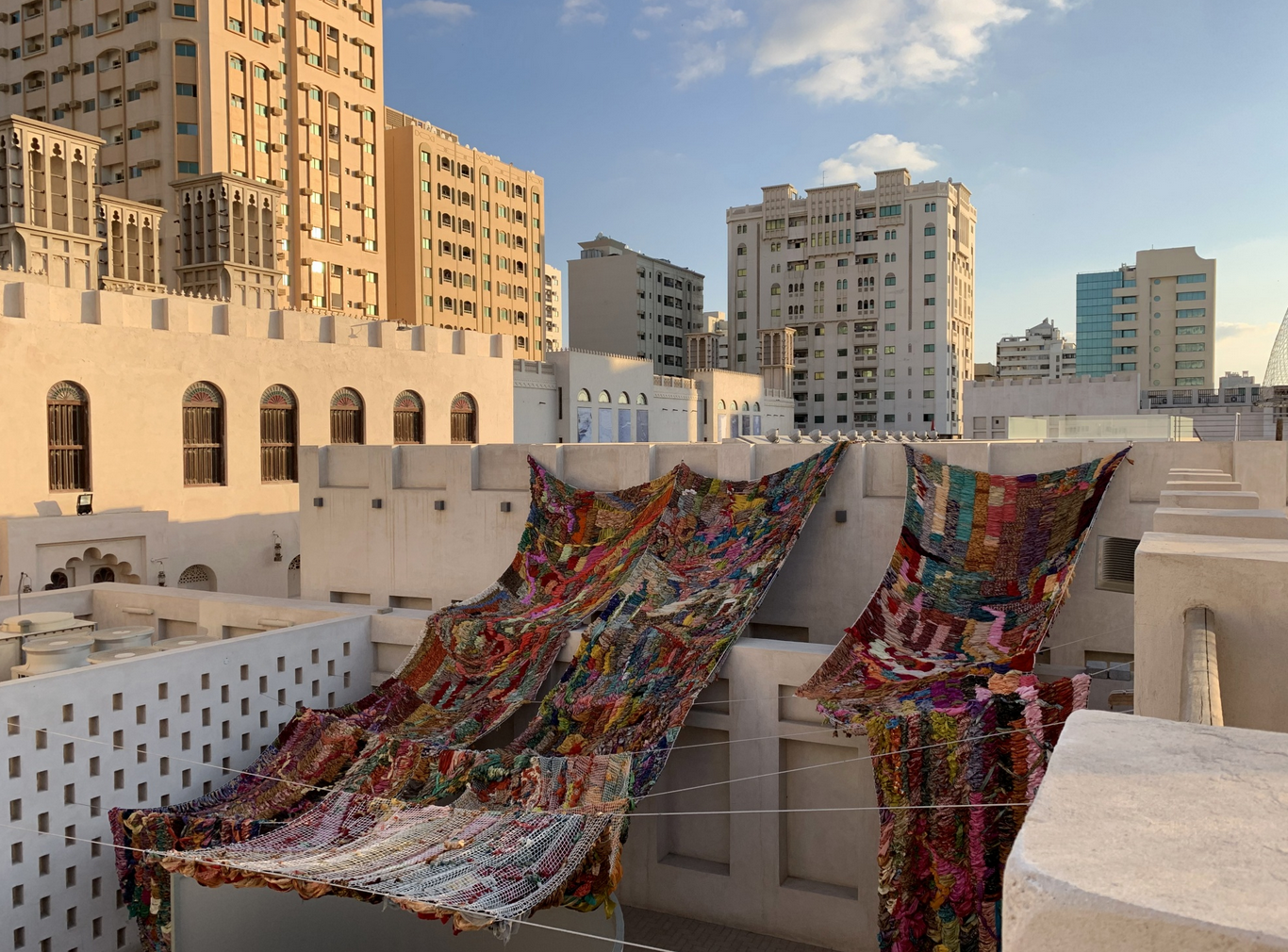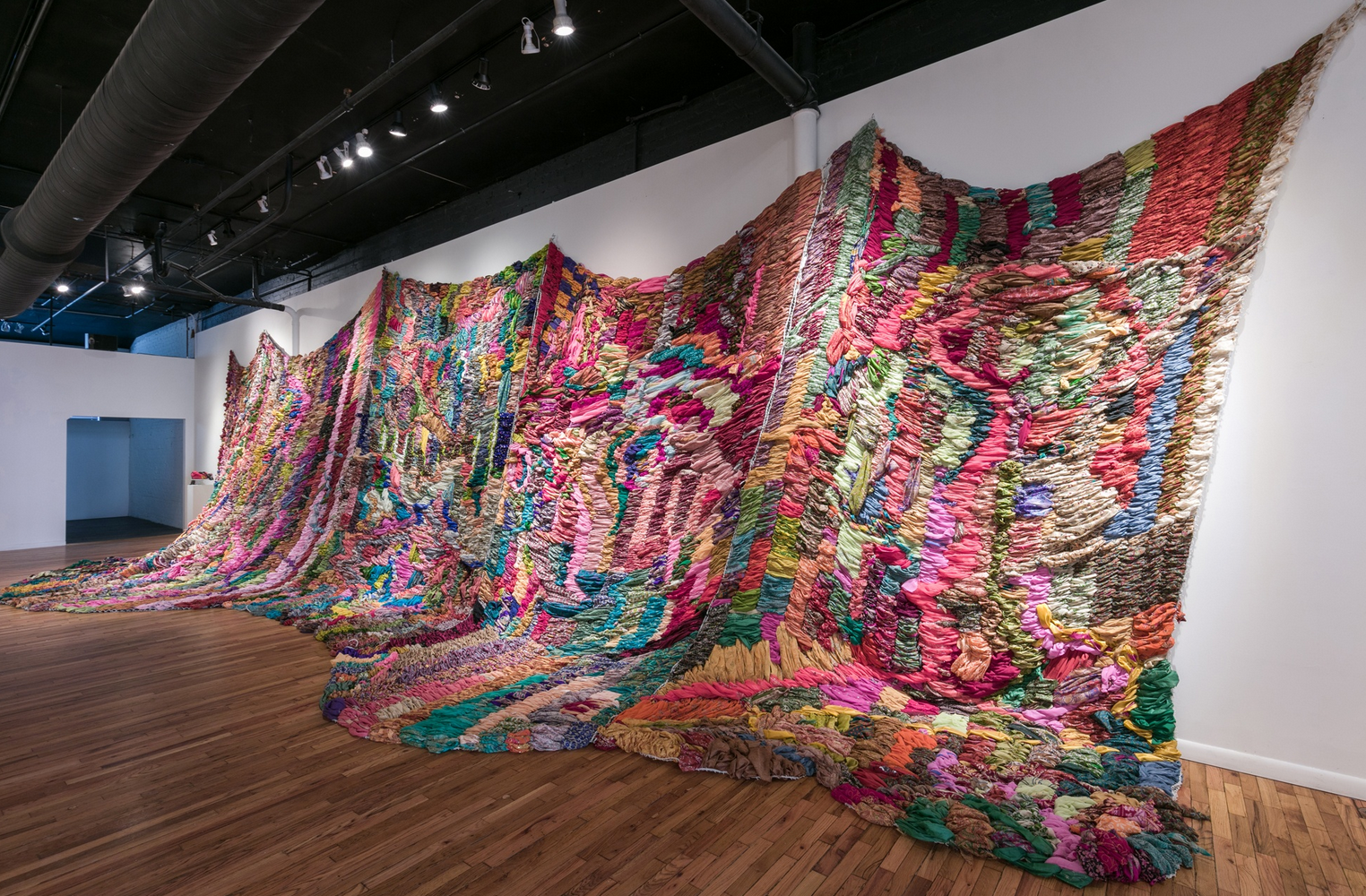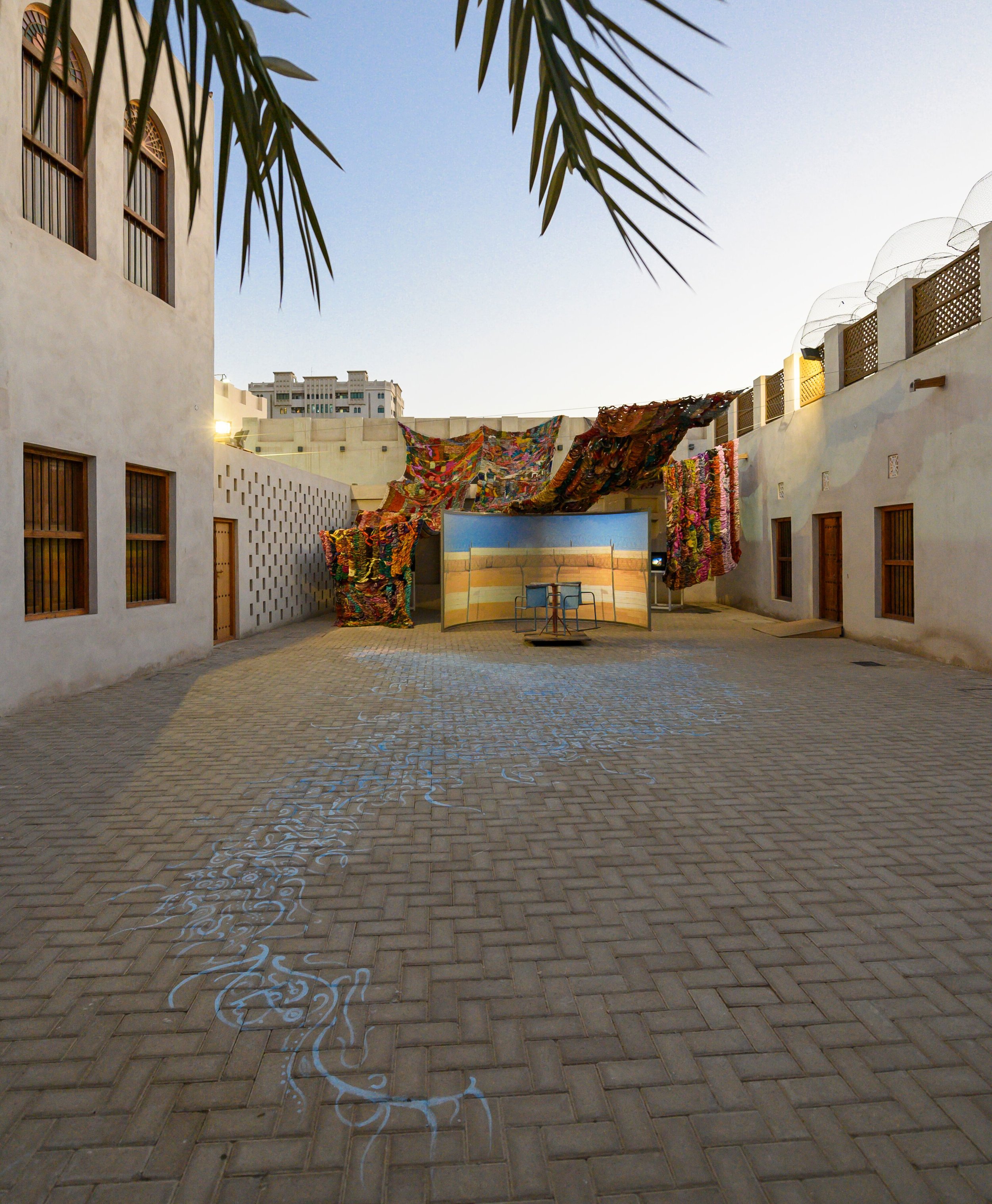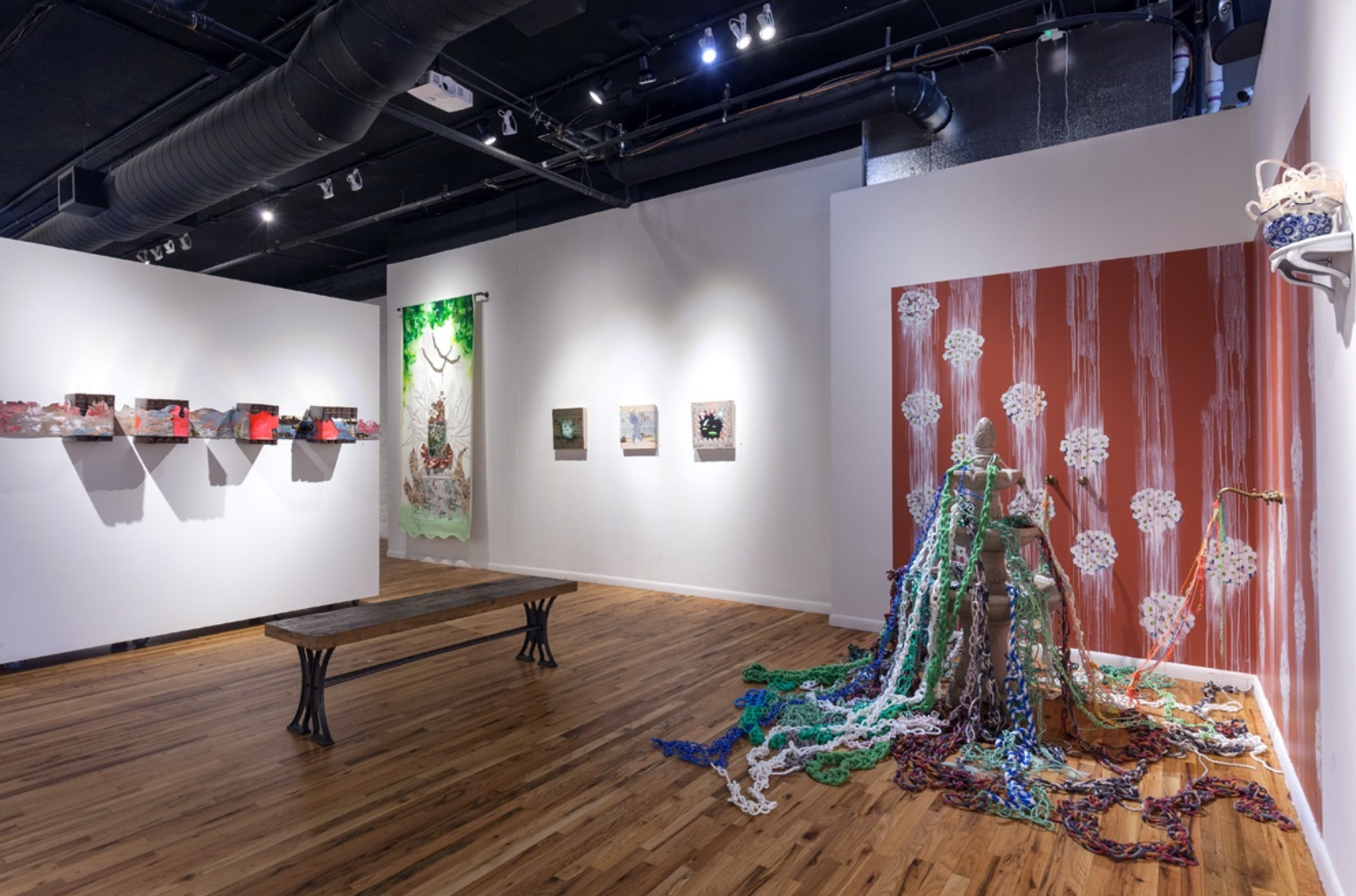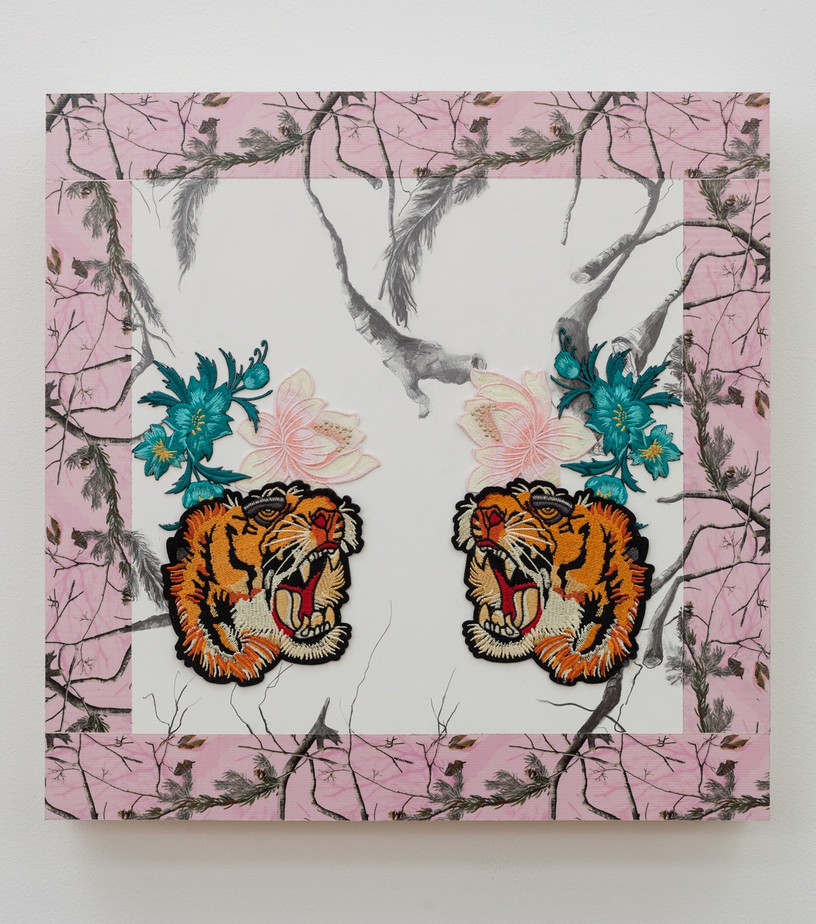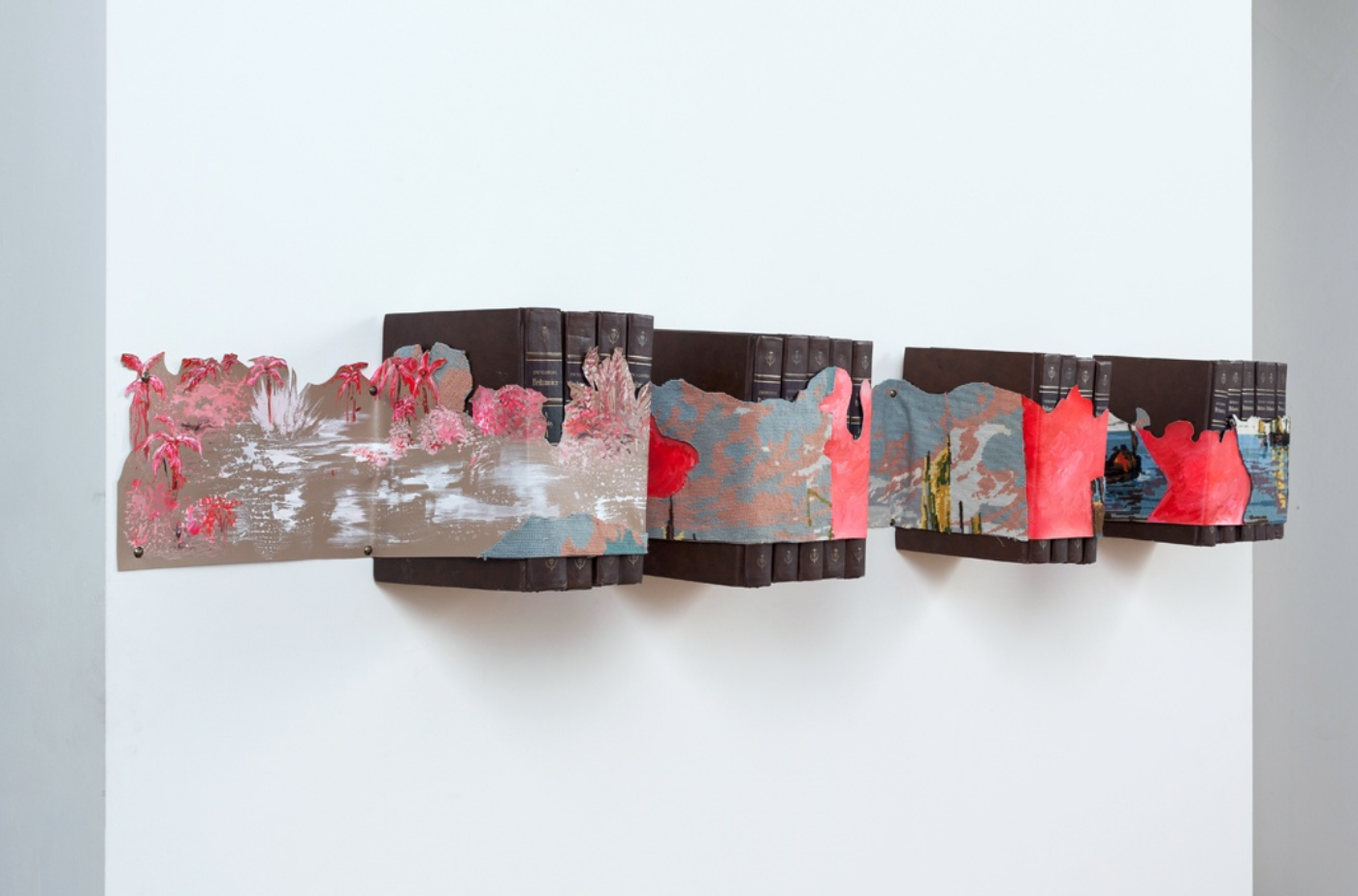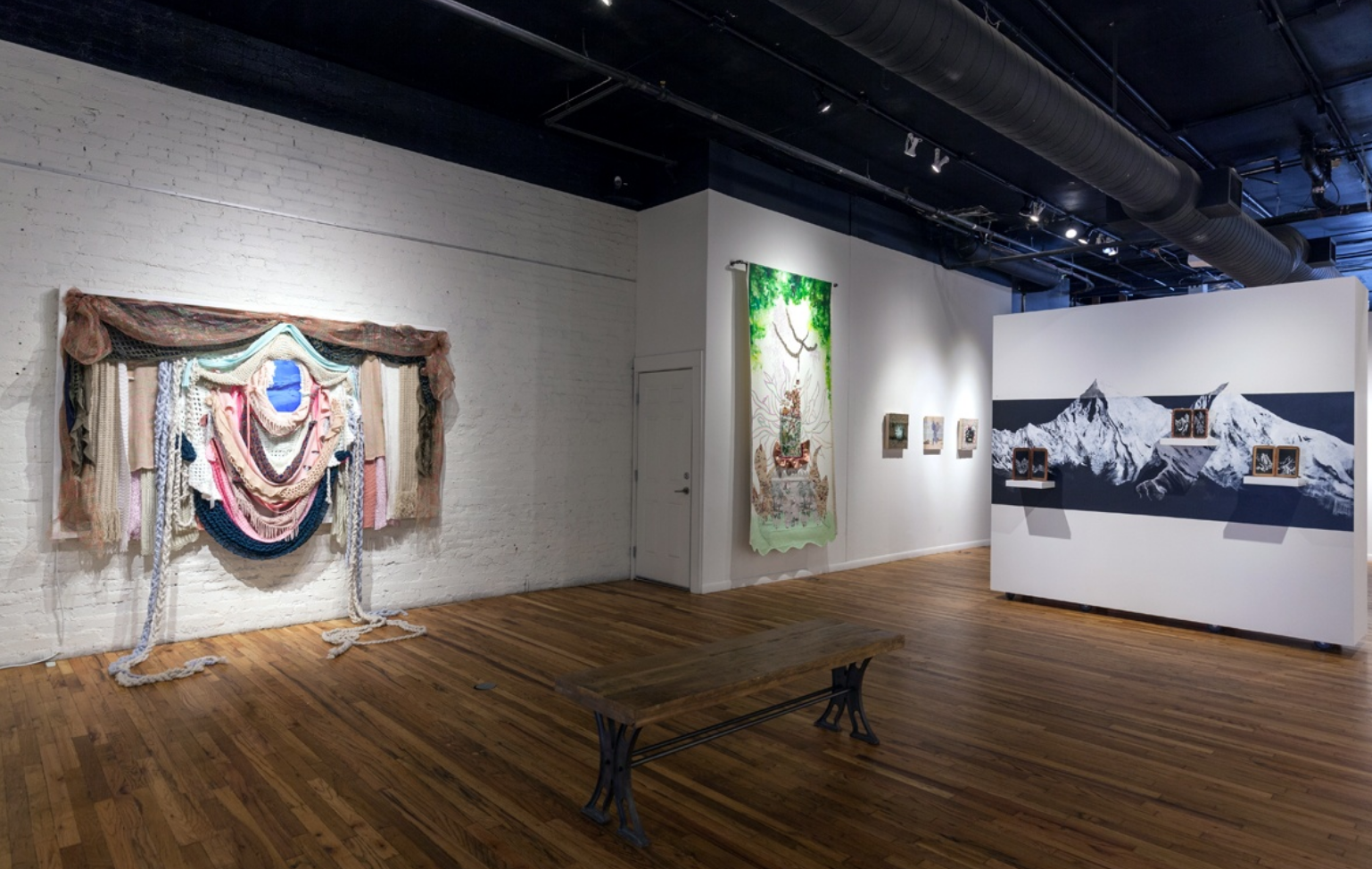Q&A: Suchitra Mattai
By Hamidah Glasgow | July 25, 2019
Suchitra Mattai is a multi-disciplinary artist who lives and works in Denver, Colorado. Suchitra was born in Guyana, South America, but has also lived in Halifax and Wolfville, Nova Scotia, Philadelphia, New York City, Minneapolis, and Udaipur, India. These diverse natural and cultural environments have greatly influenced her work and research. While her practice includes a wide range of materials and ideas, her primary interests include 1) the complex relationship between the natural and artificial worlds and 2) the questioning of historical and authoritative narratives, especially those surrounding colonialism. Through painting, fiber, drawing, collage, installation, video, and sculpture, she weaves narratives of “the other,” invoking fractured landscapes and reclaiming cultural artifacts (often colonial and domestic in nature).
Imperfect Isometry
Hamidah Glasgow: Thank you for allowing me to interview you. I was taken with your work when I first encountered your solo exhibition at the Center for Visual Art. You are a prolific artist working in so many mediums. How did your artistic life begin?
Suchitra Mattai: Thank you so much for interviewing me. I began drawing at a young age, but when I learned to paint formally at the age of 27, I was smitten. Painting and drawing are at the heart of my practice. Even when I make fiber-based works, I conceive of them as textural paintings. I learned to embroider and crochet at a young age, and these processes are also integral to my current practice. I have a longstanding interest in color theory and the history of textiles, but not just in a Western context. I often use the palettes of Indian miniature paintings and textiles as a way to connect to my Indian heritage.
Ultimately, I try to use materials that are appropriate for the idea I am trying to convey. That frequently involves teaching myself new mediums and processes. My work is experimental, and I love researching and learning new ways of communicating.
HG: Your recent work for the Sharjah Biennial is quite captivating. Please tell me about the inspiration for that work?
SM: “Imperfect Isometry” explores how spheres of politics, community, and the individual map onto one another. I am interested in migrations and diasporas, particularly what is lost and found when one moves from place to place. When I visited Sharjah for my site visit last year, I started making connections between my own family’s history as South Asian indentured laborers in the Caribbean to the laborers of South Asian descent in the Emirates. I wanted to make an installation that made these ties visible and also spoke about the complexity of borders. For this work, I wove vintage saris from India, from my own Indo-Caribbean family, and from Sharjah to create an intimate topography. I also traveled to borders with heightened distress such as those between Israel/Palestine and US/Mexico to take footage. I then combined footage of these walls with footage I took of a prison wall. My video reflects physical and psychological borders between people and places, the imprisoned and the free. The migrated merry-go-round unearthed from the abandoned Kalba Kindergarten in Sharjah spins a narrative of innocence amidst the video and fiberscape. I was interested in investigating the cycles of division between peoples, cultures and classes and the manifold repetitions and reiterations of these boundaries through time and across space.
HG: Borders, migration, and power structures are historically highly problematic. It's interesting that you visited the US/Mexico border and the Palestinian/Israeli border. How do you see these borders as being related to each other and also related to historic migration patterns?
SM: The borders I chose are currently significant to the US from a geopolitical standpoint. These sites are contested and renegotiated daily and I was interested in this shaping and reshaping of physical boundaries by the movement of people in contemporary contexts.
Imperfect Isometry, 2019
Mixed media installation, vintage saris, rope net, merry-go-round, 2-channel video, chalk, dimensions variable; 2 minutes 46 seconds, loop
Installation view: Sharjah Biennial 14: ‘Leaving the Echo Chamber’
Commissioned by Sharjah Art Foundation
Courtesy of the artist
HG: I'd like to talk about "Sweet Asylum" and the inspiration for this work?
SM: Sweet Asylum explored land as a conceptual space for the exploration of identity. The places I create are born from memory, history and imagination. I was interested in how natural environment(s) shapes personal narratives, ancestral histories and constructions of “self.”
I want my work to be both intimate and vast and landscape allows me a wide visual lens within which to situate intimate cultural artifacts and discuss the inextricably intertwined relationship of the natural and human worlds. Combining fragments of landscape, vintage objects (often domestic), and culturally specific patterns, I create a nonlinear dialogue with the past. For “Sweet Asylum,” I was particularly interested in the role of the land in migrations, assimilations, and the creation of “home.”
For “Sweet Asylum,” I was particularly interested in the role of the land in migrations, assimilations, and the creation of “home.” I use found objects because I am interested in their history. (ownership, use, etc.)
Sweet Asylum installation images
HG: Please tell me more about these three works from “Sweet Asylum”, The Right Place, Paradise, and The Intrepid Garden II.
The Right Place ( views of mountain ranges I have spent time with), 2018, vintage school house slates, chalk, graphite, acrylic, shelves, dimensions variable
SM: The Right Place ( views of mountain ranges I have spent time with), 2018, vintage school house slates, chalk, graphite, acrylic, shelves, dimensions variable
I wanted to speak to the relationship of "book" learning and experiential knowledge and show how accumulated experiences of a particular type of natural site form a whole. When one lives and travels through multiple spaces, generalizations can start to be privileged over particulars. I wanted to isolate these particulars while simultaneously thinking about the whole.
"Paradise," 2018, vintage French embroidered trim, pen on vinyl on wood, 16" x 16"
"Paradise," 2018, vintage French embroidered trim, pen on vinyl on wood, 16" x 16"
I was thinking about the secret and disturbing history of the Caribbean. When you peel back the layers, you understand the history of slavery and indentured labor in the Caribbean. The “colonial” French thread acts as flora concealing and revealing the landscape beyond.
"The Intrepid Garden II," 2018, painted sweet asylum flowers, crocheted rope, fountain, dimensions variable
"The Intrepid Garden II," 2018, painted sweet asylum flowers, crocheted rope, fountain, dimensions variable
The garden becomes a metaphor for the hidden, the arcane. The outpouring of the fibrous growth explores the relationship of the human desire to control and the uncontrollable natural world.
Installation shot, Sweet Asylum
HG: What is next for you as an artist?
SM: I am working on three projects that I am really excited about in the upcoming months as well as planning for future exhibitions. Some upcoming projects include : an exhibition with K Contemporary in August, delivering a Logan lecture at the DAM and a two- person exhibition at Platte Forum with Joshua Ware in October. I want to continue to grow my practice both through research and in scale.
HG: Thank you so much for sharing your work, Suchitra!
SM: Thank you.

